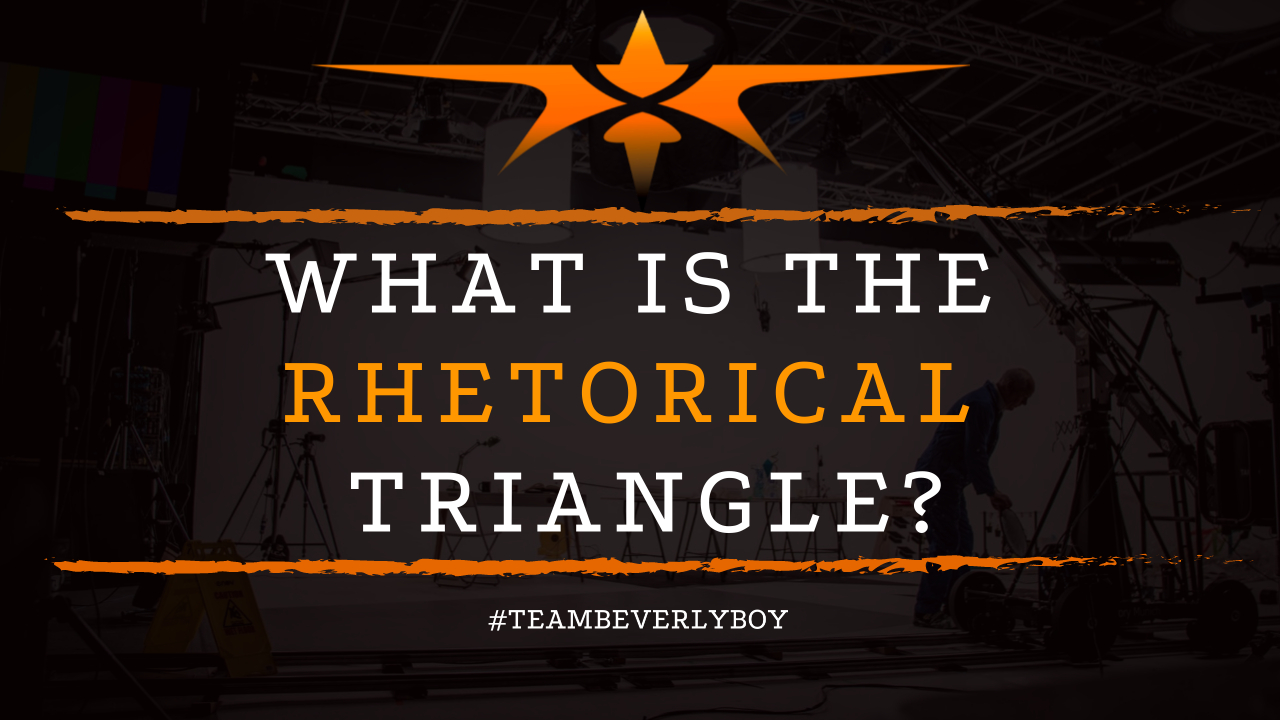
What is the Rhetorical Triangle?
The term “Rhetorical triangle” is common in advertising. And often comes up when discussing a commercial video project. Usually the concept is followed by some kind of mention of pathos, logos, and ethos. And is then followed by questionable looks from all parties involved. What? What is the rhetorical triangle and what is all this about pathos, logos, and ethos?

Firstly, learning about the rhetorical triangle will help you to understand exactly how pathos, logos, and ethos will play out in your films and videos.
And will equally help you to establish stronger advertising concepts because together these three elements represent the means of persuasion!
What is the Rhetorical Triangle?
The rhetorical triangle is represented by the three persuasive advertising techniques:
- Ethos – credibility and ethics
- Pathos – emotions and feelings
- Logos – logic and reason
Finding a Balance
Great advertising, including the creation of great advertising videos such as commercials, is represented by the balance of all three. Thus, the rhetorical triangle is the tying together of the three concepts of persuasive advertising, pathos, logos and ethos.
With which a balance between them will lead the audience to a series of conclusions. Which might cause them to feel a certain way or to purchase a certain product or service.
From Aristotle’s ground rules as to the art of persuasion known as rhetoric. The rhetorical triangle dates back to ancient Greek law, politics and poetry.
Furthermore, the three appeals of the triangle work independently. As well as in unison with one another to create the compelling arguments that are most likely to drive audience conclusions. And purchase decisions.
How is the Rhetorical Triangle Used in Advertising?
The rhetorical triangle is used in almost any advertising that is performed. Either subconsciously or (if you’re working with an excellent ad agency or production company) consciously.
Great advertising techniques use the rhetorical triangle to plan out commercial videos. So that they have a balance of all three areas of the rhetoric.
Thus:
- Ethos – Appeals to an audience through the creation of credibility of the source. By building character and aiming to convince the audience that what is said is reliable and ethical.
- Pathos – Appeals to the audience through emotions. Uses techniques that evoke nostalgia, memory, or shared experience to tug at the audience’s heartstrings.
- Logos – Appeals to the audience through the use of logic and reason, aiming to connect by providing statistics, facts and fun charts and graphs.
In Summation
Think about all of the advertising that you’ve ever done. And whether or not you’ve been successful in your campaigns. Did you use the rhetorical triangle to connect with your audience emotionally, build credibility, and provide logic?
Because, when you ask, “What is the rhetorical triangle?” Our answer is guided by this overruling focus on ethos, pathos, and logos as they apply to the decision making of the avid consumer!


